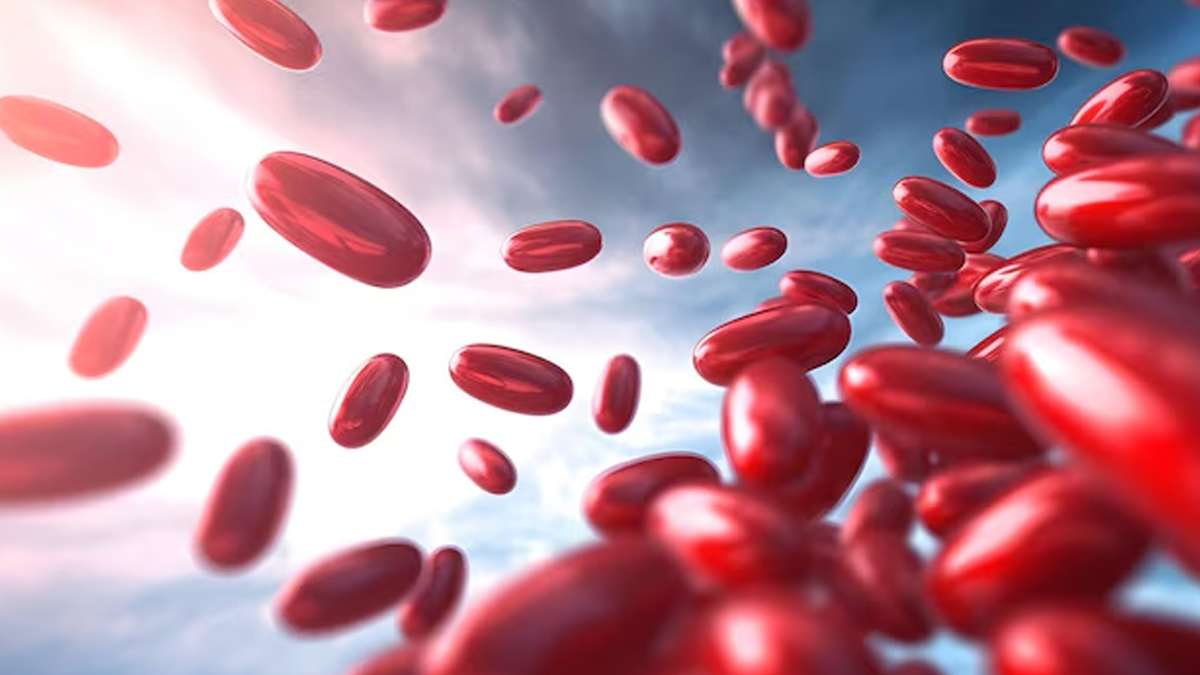
For a long time, iron deficiency was considered the primary cause of anaemia in people. In fact, the World Health Organization (WHO) suggests that it is the most common nutritional deficiency leading to anaemia. However, in India, this may not be the case, as a recent study claims that iron deficiency plays a relatively small role in the overall prevalence of anaemia.
Table of Content:-
Anaemia is a medical condition that occurs when there aren’t enough Red Blood Cells (RBCs) or haemoglobin in the body. The RBCs contain haemoglobin, which is a protein that carries oxygen throughout the body. When the body lacks these vital components, it can lead to anaemia and cause symptoms such as fatigue, changes in skin colour, headaches, cold hands and feet, and breathing issues.
Iron is an essential mineral that helps the body produce RBCs and haemoglobin, which is why low iron intake can cause iron deficiency anaemia. However, anaemia can occur due to other causes beyond iron deficiency. Let's take a look at the study that explores those additional contributing factors.
Also Read: Menorrhagia And Anaemia Risk: How To Reduce Risk Of Anaemia From Heavy Periods
About The Study

The community-based cross-sectional survey study published in the peer-reviewed European Journal of Clinical Nutrition took blood samples from 4500 participants, comprising adolescents, adults, and the elderly, from eight Indian states, including Meghalaya and Assam. Out of the total number of participants, 34.9% were anaemic.
The prevalence of anaemia was 44% in adolescent girls, 41% in adults, and 45% in elderly women, compared to 24% in adolescent boys, 21% in adults, and 37% in elderly men.
The overall prevalence varied widely, ranging from 12% in Meghalaya to 70% in Assam.
The study findings revealed that iron deficiency-related anaemia prevalence was less than a third of the overall anaemia prevalence and differed among age and sex groups, approaching 45% only in adolescent girls. Researchers also highlighted ‘other’ causes leading to anaemia.
According to the study authors, "The major proportion of anaemia in all groups studied was due to... unknown (and unmeasured) causes of anaemia. This could be due to deficiencies in other erythropoietic (blood-producing) nutrients like B12 or folate, or due to hemoglobinopathies, undetected blood loss, an unhygienic environment, or other causes like air pollution."
If Iron Deficiency Isn’t The Main Cause Of Anaemia, What Other Factors Should Be Considered?

In an interaction with the OnlyMyHealth team, Dr Anoop P, Senior Consultant – Hematology, Aster CMI Hospital, Bengaluru, attributes increased anaemia risk to nutritional deficiencies beyond iron, such as vitamin B12 and folate deficiencies. He also lists other contributing factors, including chronic infections, genetic disorders like thalassemia, and socio-economic conditions that can affect access to a balanced diet.
“Additionally, the prevalence of parasitic infections, particularly hookworm, and the impact of poor sanitation and hygiene practices may further exacerbate the incidence of anaemia,” the doctor notes, emphasising the need to understand multifaceted contributors for developing effective public health strategies to combat anaemia in the Indian population.
Also Read: From Pale Skin To Fatigue, Signs Of Iron Deficiency Anaemia In Pregnant Women
Who Is Most At Risk Of Anaemia?
According to the WHO, anaemia is estimated to affect half a billion women 15–49 years of age and 269 million children 6–59 months of age worldwide.
In 2019, 30% (53.9 crores) of non-pregnant women and 37% (3.2 crores) of pregnant women aged 15–49 years were affected by anaemia, the health body reports, adding that the population groups most at risk to anaemia include children under 5 years of age, particularly infants and children under 2 years of age, menstruating adolescent girls and women, and pregnant and postpartum women.
Key Steps To Preventing Anaemia

To reduce the risk of anaemia, people should prioritise a healthy lifestyle and focus primarily on their diet.
Dr Anoop recommends adequate intake of iron-rich foods, such as red meat, poultry, fish, lentils, beans, and fortified cereals, and emphasises incorporating vitamin C-rich foods, like citrus fruits and leafy greens, into your diet.
He also advises getting regular health checkups to identify any underlying conditions that may contribute to anaemia, such as chronic diseases or nutritional deficiencies.
Most importantly, people should pay attention to their overall health by maintaining a balanced diet, engaging in regular physical activity, and managing stress levels, as these factors can affect the body's ability to produce healthy red blood cells.
Also watch this video
How we keep this article up to date:
We work with experts and keep a close eye on the latest in health and wellness. Whenever there is a new research or helpful information, we update our articles with accurate and useful advice.
Current Version